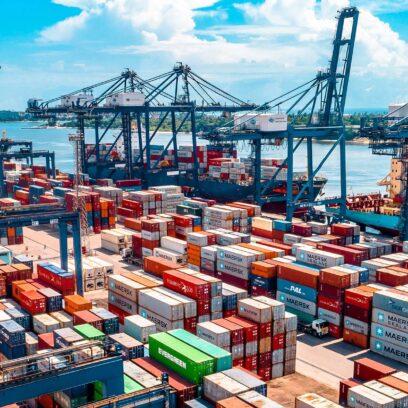CSRD Prep: ESRS Draft Act Released (June 2023 Update)


By many accounts, 2023 is expected to be a transformative year in the evolution of climate-related disclosure and mitigation requirements in the United States. In this webinar, we cut through the jargon to provide clarity about what climate-related requirements may be coming for US companies by unpacking the two proposed federal rules that are currently pending and one EU regulation that affects some US companies.
US companies operating in the EU may soon be required to meet CSRD requirements. Here’s how to prepare.
The Corporate Sustainability Reporting Directive (CSRD) is a common reporting framework that will require nearly 50,000 companies operating in the European Union (EU) to disclose the impact of their corporate activities on the environment and society. This is one of three rules that make up the EU’s sustainability reporting framework, alongside the Sustainable Finance Disclosure Regulation (SFDR) and the EU Taxonomy. The CSRD replaces the Non-Financial Reporting Directive (NFRD), requiring more stringent reporting by more companies with assurance provided by third-party audits. The European Commission (EC) recently published a draft delegated act containing the first set of European Sustainability Reporting Standards (ESRS) under the CSRD—which are the rules and regulations created by the European Financial Reporting Advisory Group (EFRAG) that companies must follow to meet their obligations under the CSRD—proposing several changes to the directive. This post was updated to include the most recent information available about the CSRD and its potential impact on US businesses.
The proposed changes would ease the burden on smaller companies and first-time reporters. Specifically, the phase-in times for some key sustainability factors such as Scope 3 value chain emissions would be extended. Additionally, if adopted as drafted, all companies would be allowed to focus their reporting efforts on material sustainability factors that are most relevant to their business operations. This means that smaller companies and those reporting for the first time would have additional time to prepare and comply with these aspects of the CSRD. A new public feedback period has been opened until July 7, providing an opportunity for stakeholders to voice their concerns and insights about the proposed standards.
What Is the CSRD?
The CSRD is a new EU rule that aims to create a common reporting framework for companies to disclose non-financial activities as they relate to the environment and society, and will replace the NFRD which was not mandatory and affected only 11,000 companies. While the CSRD mainly affects EU companies, some US businesses or their subsidiaries may be within scope of the new rule, so it’s critical to stay informed. In a previous post, we covered the details of the recently passed CSRD. In this post, we’re going to explain why this new EU rule matters for some United States (US) businesses and what you should do now to start preparing if your organization is within scope of the new rule.
CarbonBetter helps organizations take proactive steps to ensure compliance with potential new regulations, including the CSRD rule, the proposed SEC rule and the proposed federal supplier rule. Reach out today to get started.
Contact UsWhy You Should Start Preparing Now
The new EU rule will only affect select US businesses and even then not for a few years, so why begin preparing now? Time. It takes time to make a plan, build a team, secure a budget, and execute your plan. Even if your organization does not meet the criteria for companies affected by the rule today, that may change before the rule goes into effect.
How to Prepare
Criteria For Disclosure Requirements
The following companies will have to follow the disclosure requirements laid out in the CSRD:
- Large EU companies (including subsidiaries and branches of non-EU parent companies) exceeding at least two of the following criteria:
- 250 employees on average over the financial year
- A balance sheet total of €20 million
- A net turnover of €40 million
- Companies listed on the EU regulatory market, regardless of size
- Non-EU companies that have a turnover greater than €150 million in the EU
What Does This Mean For US Businesses?
As noted above, US companies that have a turnover greater than €150 million in each of the past two years consecutively, or subsidiaries of US companies that are located in the EU and meet the requirements above, will have to comply with the CSRD requirements.
The proposed changes to the ESRS, including the introduction of materiality assessments and the extension of phase-in times, could significantly impact the preparation strategies of US businesses operating in the EU. The ESRS delegated draftcomment period, which ends on July 7, 2023, provides an opportunity for US businesses affected by the CSRD to voice their concerns and contribute to the shaping of the final sustainability reporting standards.
“The new EU rule will only affect select US businesses and even then not for a few years, so why begin preparing now? Time. It takes time to make a plan, build a team, secure a budget, and execute your plan.”
Dominic Sung ON Why You Should Start Preparing Now For The CSRD Requirements

SUSTAINABILITY REPORTING OVERVIEW
Sustainability reporting serves as a valuable tool to achieve corporate commitments and better manage climate-related business risks. This white paper walks you through what's typically included and what should be considered.
Where to Start
Since there are so many factors involved, including whether a business or its subsidiaries operates in the EU, the number of employees in an organization, and the amount of business a US-based company does in the EU, no two organizations will follow exactly the same path to meet the compliance requirements of the CSRD. So, what should you do first?
The first step is to talk to CarbonBetter. The implementation of the new EU sustainability reporting requirements for US businesses are currently proposed to start applying between 2024 and 2028, depending on the size and type of the company. Given the proposed ESRS changes, it's important to reassess your company's preparation strategy for the CSRD. A partner like CarbonBetter can help you navigate these changes and ensure your company is prepared for the evolving requirements.
We’ll start with an applicability assessment and gap analysis to understand if you are subject to the CSRD as well as the difference between your organization’s current sustainability efforts and the CSRD requirements by walking through some key questions. Those questions may include:
- What branches or subsidiaries are in scope of the CSRD, and are there any branches or subsidiaries that may be within the scope of the CSRD before it goes into effect? It’s important to pay attention to the criteria, because the CSRD affects many more businesses than the NFRD did. If you are unsure, contact us and we can help determine if your company or its subsidiaries will be affected by the new EU rule.
- Are there changes needed to current processes and controls in anticipation of the new ESRS? There are specific reporting requirements that must be met if your company is within scope of the CSRD, so it’s important to perform a gap analysis and create a plan to align your current reporting with the upcoming CSRD requirements and the ESRS requirements in their current form.
- Are you gathering applicable data in conformance with requirements under Task Force on Climate-Related Financial Disclosures (TCFD) and Global Reporting Initiative (GRI) standards, which will be leveraged in developing the ESRS? If not, it’s important to get started today so your company is prepared before the rule goes into effect. A partner like CarbonBetter can help you and your team navigate the process most effectively. Contact us today to learn more.
- How does your company’s current Environmental, Social, and Governance (ESG) strategy align with the objectives of the CSRD? Identify what gaps exist and form a plan to close that gap before the CSRD requirements go into effect for your organization. Companies may be granted an extra year to disclose information on anticipated financial effects related to non-climate environmental issues and certain 'own workforce' data points. This proposed extension aims to ease the initial reporting burden.
- At what level of the organization should reporting requirements be applied? It’s important to know who the key stakeholders are and who will ultimately be responsible to carry out the reporting requirements.
- How much is this going to cost? The Commission's draft introduces the concept of voluntary disclosures, including biodiversity transition plans and measures to ensure interoperability with global standard setting initiatives. On the financial front, the Commission's proposals are expected to result in significant cost reductions during the phase-in period, estimated at nearly €1.2 billion, and €230 million annually.
- What processes and controls will be needed to report current period information and forward looking information that will be subject to assurance requirements? You’ll want to make sure you have the right team and resources in place, as well as any additional budgeting requirements, to be able to meet the verification requirements. However, sustainable finance groups have voiced concerns that the changes could dilute the effectiveness of the CSRD. Eurosif, for instance, has expressed significant concern, describing the changes as a setback in ambition compared to EFRAG’s final recommendations.
- Do current processes allow for sustainability reporting at the level of detail required by CSRD (i.e., subsidiary-level reporting)? If not, identify what needs to be updated in the process and create a roadmap to allow for the level of reporting that will be required when your organization is affected by the requirements.
- How will your company handle the new materiality assessments for sustainability factors? The European Commission's draft proposes that all disclosure requirements, with the exception of a set of general disclosures, be subject to materiality assessments. This effectively allows companies to focus their reporting on sustainability factors that they consider most relevant to their businesses. It's important to understand how this change will affect your company's reporting strategy and processes.
- How will your company adapt to the extended phase-in times for some key sustainability factors such as Scope 3 value chain emissions? The European Commission's draft proposes to ease the burden on smaller companies and first-time reporters by extending the phase-in times for some key sustainability factors. This means that your company may have more time to prepare and comply with these aspects of the CSRD.
- How will your company handle the potential voluntary disclosures, such as biodiversity transition plans? The Commission's draft introduces the concept of voluntary disclosures, which could provide additional opportunities for your company to demonstrate its commitment to sustainability.
Conclusion
The right sustainability partner will be critical in meeting CSRD regulatory deadlines and mitigating risks associated with noncompliance. CarbonBetter helps organizations navigate the complexities of voluntary and mandatory climate-related efforts no matter where in the process you are. Reach out today with questions or to get started.
US companies that have a turnover greater than €150 million in each of the past two years consecutively, or subsidiaries of US companies that are located in the EU and meet certain criteria (e.g., 250 employees, balance sheet total of €20 million, net turnover of €40 million), will have to comply with the CSRD requirements.
Even though the CSRD may not affect some US businesses for a few years, it takes time to make a plan, build a team, secure a budget, and execute the plan. Companies need to begin preparations now to ensure they can meet the CSRD requirements in time.
US companies should start by conducting an applicability assessment and gap analysis to determine if they are subject to the CSRD and identify any differences between their current sustainability efforts and the CSRD requirements. They should also gather applicable data in conformance with TCFD and GRI standards, assess their current ESG strategy, and identify processes and controls needed for reporting and assurance requirements.

About the Author
Dominic Sung is a Director of Business Development for CarbonBetter. He joined the company in 2022 with a focus on growing the Climate Services business by partnering with clients on their sustainability journey to measure, report, and reduce their emissions in a transparent, traceable, and pragmatic way.


